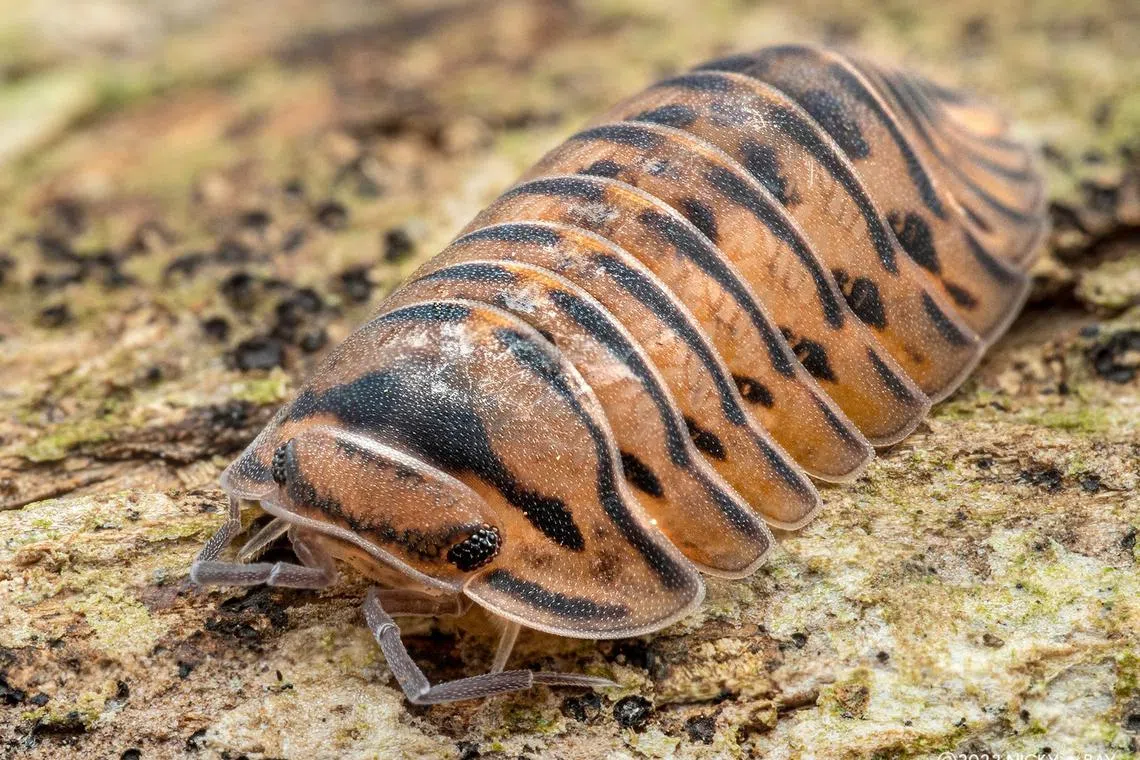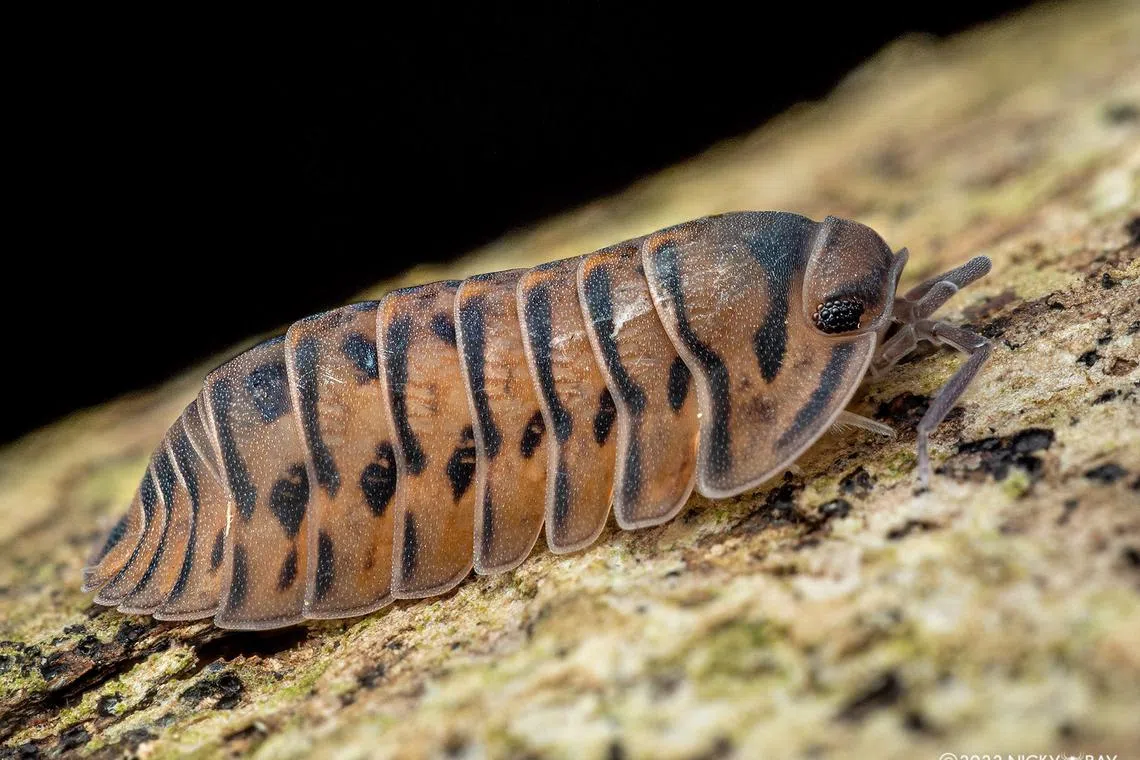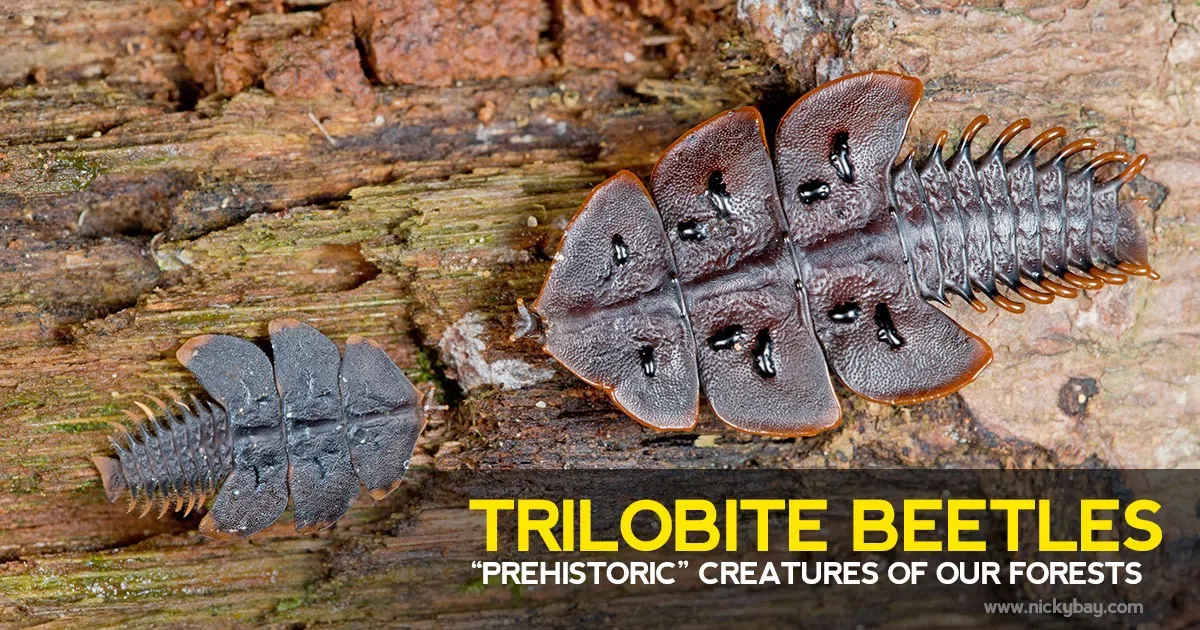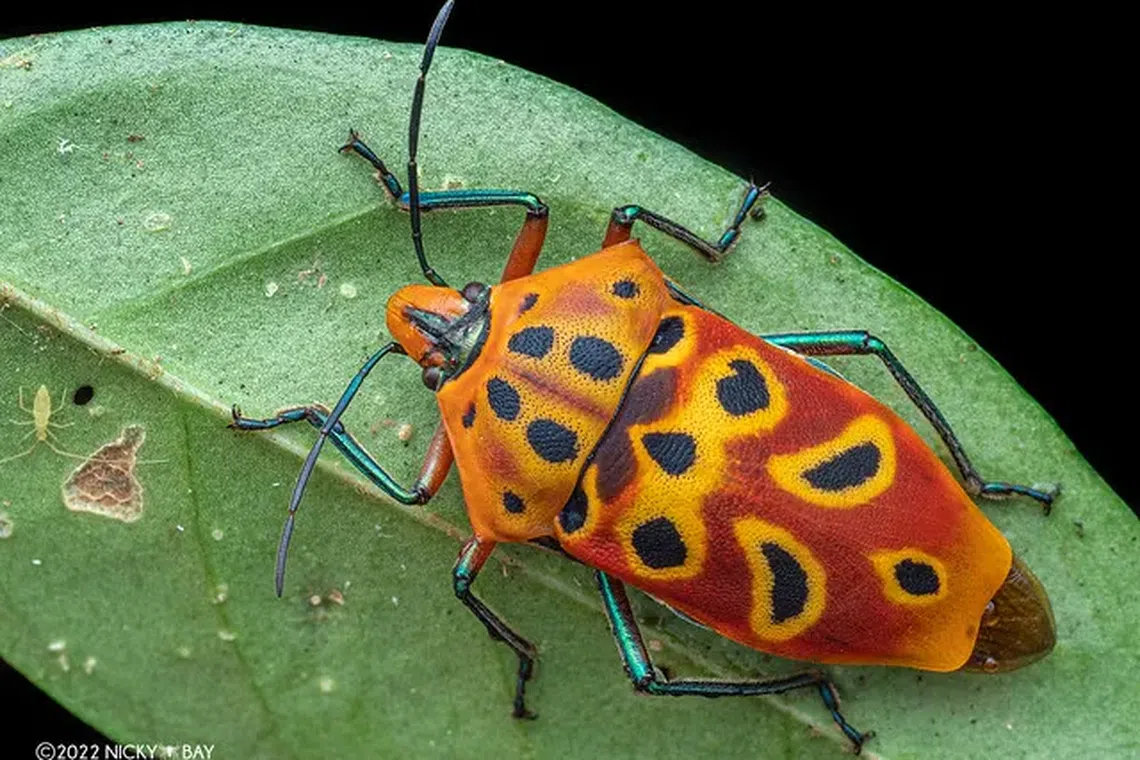‘A window to an alien world’: Macro photographer’s quest may have led him to discover a new species
Sign up now: Get ST's newsletters delivered to your inbox

A “Singapore Tiger” isopod, so dubbed because of its orange body and black stripes.
PHOTO: COURTESY OF NICKY BAY
Follow topic:
Mr Nicky Bay was on a photography field trip in 2022 with his friends when he came across a “Singapore Tiger”.
The creature, which he photographed and catalogued on his website, was not a man-eating cat but a terrestrial isopod – a land-dwelling crustacean that lives in soil and eats decaying plant matter.
As it has an orange body and black stripes, Mr Bay dubbed it the Singapore Tiger. It is one of the 160 isopods that he has catalogued online since he started photographing the critters two years ago.
But what sets these isopods apart, other than their striking appearances, is the fact that they might be a previously undiscovered species.

A “Singapore Tiger” isopod.
PHOTO: COURTESY OF NICKY BAY
“Obviously, I was very excited when I first saw it. I informed my friends to shout for me whenever they saw an isopod and when they shouted that night, it proved to be a very different isopod. I even sent photos to the local isopod Telegram group, much to their excitement,” he told The Straits Times.
Mr Bay, 45, consulted isopod taxonomy enthusiasts and found that the specimens do not fit into any known genus. But he said the family of isopods that the Singapore Tiger belongs to is poorly studied in the region, and there may well be hundreds of isopod species in South-east Asia that are new to science.
The chief technology officer said he photographed the isopods in the eastern half of Singapore but declined to be more specific, for fear that enthusiasts may attempt to harvest some of them for their collections.

What sets these isopods apart, other than their striking appearances, is the fact that they might be a previously undiscovered species.
PHOTO: COURTESY OF NICKY BAY
Dr Lam Weng Ngai from Nanyang Technological University’s Asian School of the Environment said the isopod species that Mr Bay discovered is likely a new, undescribed one.
“It is very attractive and definitely a very noteworthy discovery,” he said.
“Unfortunately, formally describing new isopod species is rather difficult as there are very few isopod taxonomists (scientists that specialise in describing and classifying species) working in the region. Even some of the most popular and commonly circulated isopods in the pet trade are undescribed.”
With isopod keeping becoming more popular in Singapore as the Covid-19 pandemic ebbed, Mr Bay set out to catalogue various species of isopods in 2021 after he noticed a lack of websites with comprehensive information or detailed photos of the creatures.
The macro-photography enthusiast has snapped photos of both rare and common arthropods, including beetles, flies, ants and spiders, for 15 years, and has uploaded nearly 43,000 photos to his Flickr account chronicling his hobby.

Trilobite beetles are named for their resemblance to the trilobite, an extinct prehistoric creature.
PHOTO: COURTESY OF NICKY BAY
Mr Bay has also travelled to the homes of local isopod collectors to photograph their pets, and recently launched a separate website for isopod-focused content, cataloguing the various species he has photographed.
“Macro photography allows me to discover intricate details in nature’s creations right under our noses,” said Mr Bay, who fell in love with the art form in 2008.
“I call it a window to an alien world.”

An ocellated shield bug.
PHOTO: COURTESY OF NICKY BAY


